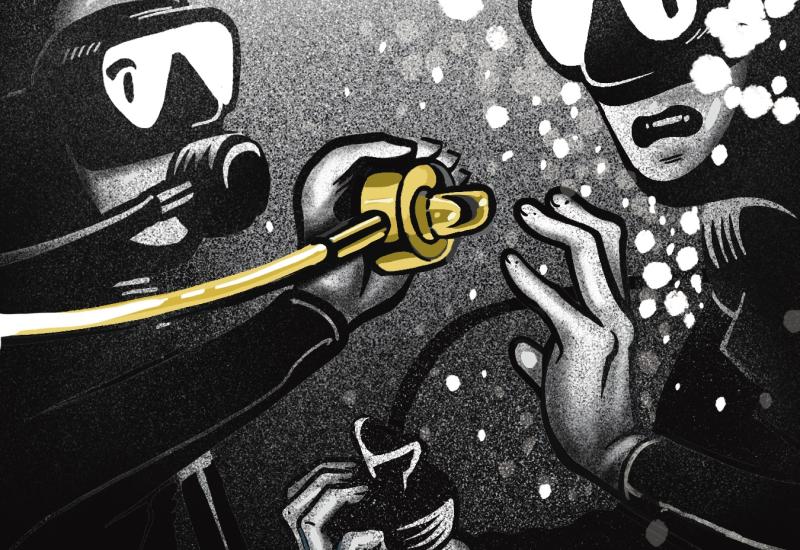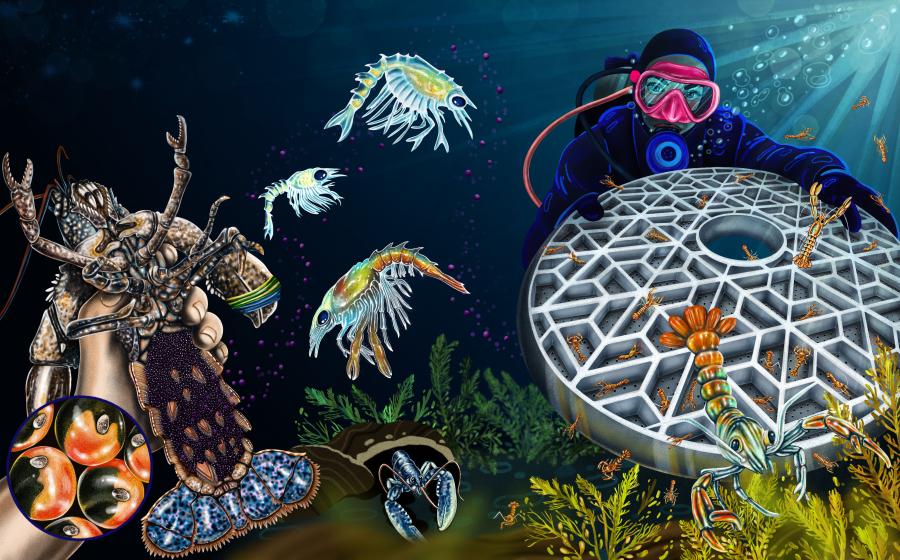Divided Focus | Lessons for Life

Steven P. HughesGetting back safe is always the first objective. Nothing, like getting a great photo, should distract you from that main goal.
Tina and Josh had been diving together for a long time, since before they were married, 10 years earlier.
They had both dabbled with underwater photography, but Tina recently had picked it up again as her new passion when Josh gave her an underwater camera for their anniversary. They immediately planned a dive trip.
The Divers
Tina was 37 and petite. She stayed active and was fit, with no known medical conditions. Josh was 40, a big man, over 6 feet tall and burly. He had a sedentary job and didn’t make as much time for exercise as Tina did.
They were both experienced divers, making three or four trips to the ocean a year. They also made occasional trips to a local lake to go diving.
The Dives
Conditions were good when Tina and Josh arrived at the dive boat early in the morning. The water was warm and so was the air. There was a light wind and no current to speak of. It was going to be a beautiful day above and below the water.
On their first dive, the boat captain chose a reef in 80 feet of seawater. They made a typical dive for the two of them. Josh tended to use his air supply more quickly than Tina, and he was the limiting factor on the dive. They surfaced after 25 minutes.
As the crew moved the boat to a new dive site, Tina took the time during their surface interval to look over her photos and adjust some of the settings on the camera and underwater strobe. She knew it was going to take some practice to get everything right, but she liked the results she had gotten on her first try.
The Accident
The crew attached a line to a buoy in 50 feet of water. After resting a little longer and having a snack, the divers entered the water for their second dive. At this shallower depth, Tina and Josh knew they would have plenty of time for Tina to practice.
Tina was focused on finding good photo subjects and immediately began searching the reef once they got to the bottom.
Josh hung back, trying to stay out of Tina’s way. He was happy she was so excited about his gift and wanted her to be able to show off her photos when they got home. She had already been talking about entering some photo contests if she got some good images.
Josh would occasionally swim a short distance away, looking for good photo subjects, then he would swim back and use hand signals to point out what he found. On one of his side trips, Josh found a moray eel in its hole and rushed back to let Tina know.
When he got there, Tina was focused on her shot. It took her a few minutes to look up. Once she realized what Josh had found, Tina quickly followed him back to the eel.
The animal had pulled back inside its hole, so Tina hovered above the sand to wait for it to come out.
To avoid spooking the eel, Josh moved farther away, behind a reef outcropping. He continued watching Tina as she relaxed and controlled her breathing. It was only then that Josh realized that it was difficult to get a breath from his tank.
He grabbed his pressure gauge and discovered his tank was empty. He hadn’t been paying attention to his own air consumption while he was searching for photo subjects for Tina. Josh immediately began swimming toward his wife. She had her back to him and didn’t see him coming. Halfway there, Josh took his last half breath from his tank. He panicked. Instead of continuing to swim toward Tina, he bolted toward the surface.
When Tina was satisfied she had the photo of the moray eel she wanted, she looked around for Josh but couldn’t find him. After a minute of searching, she began surfacing, turning and looking at the reef below her as she did.
She didn’t see Josh until she made it to the surface.
Josh had ascended rapidly. At the surface, he called out for help and then lost consciousness. The boat crew immediately jumped into the water to help. He hadn’t been able to inflate his BCD and had slipped back below the surface with his regulator out of his mouth. They had to grab his body from about 5 feet down.
Once the crew got him on the boat, they immediately began resuscitation efforts. Josh never regained consciousness.
Analysis
Josh’s situation is a fairly typical description of an air embolism, also known as an arterial gas embolism or a cerebral arterial gas embolism. When you ascend too quickly from depth without allowing the air in your lungs to escape as it expands, the air can tear the lung tissues and leak an air bubble into the lung cavity.
In the right circumstances, and depending on the nature of the trauma, that air bubble can enter the arterial bloodstream and send a bubble of air directly to the brain—an embolism. The air bubble in the bloodstream cuts off blood flow to the brain, causing stroke-like symptoms, paralysis and death. This is why one of the cardinal rules of diving is to never hold your breath. The circumstances leading to Josh’s death are not unusual in terms of arterial gas embolisms. Poor gas management led to him running out of air at depth. The moment he realized he was out of air, his fight or flight response kicked in and, in his mind, the only safe place to be was on the surface. Even though he was likely just a few feet from Tina, panic caused him to ignore that option. He ascended nearly 50 feet in mere seconds.
Divers are ultimately responsible for their own breathing-gas management. A good buddy will check to see how you are doing, but it is up to you to keep an eye on your own pressure gauge and signal the end of the dive when you reach an agreed-upon limit, typically 300 to 500 psi. Josh and Tina had dived together a long time, and they were used to Josh’s air consumption controlling the dive.
In this case, Tina was hovering near the bottom, taking photos, while Josh was swimming around scouting locations. He was using a normal amount of air, for him, while Tina was likely breathing even more slowly than if she were swimming with Josh. It’s important for dive buddies to evaluate their air consumption rates. If they aren’t compatible, they may want to consider seeking a different dive buddy.
Another option is for one buddy to wear a larger tank, or the other wear a smaller one, so they need to surface about the same time.
Tina was not at fault, but she wasn’t being a good buddy. Josh was too focused on helping Tina to remember his own training and to take into account his air consumption compared to hers. And that led to a deadly situation.
Lessons for Life
- Maintain fitness to dive. Cardiovascular fitness is one of the best ways to extend your bottom time and lower your air consumption.
- Be a good buddy. Even if you are focused on a task, remember to check on your dive buddy from time to time.
- Monitor your air consumption. We were all trained in the importance of checking our air pressure. Running out of gas in your car is generally an inconvenience. Running out of breathing gas underwater can be deadly.










